Featured Comment
Your recipe is on another level, Yuto! One of the best things I’ve ever eaten my life! No joke!
★★★★★
– Lion
Have you ever noticed how some dishes instantly feel like home? Japan treasures comfort plates like nikujaga, karaage chicken, hambagu, or miso mackerel, but shogayaki holds its own place at the table.
Imagine tender pork sizzling until golden, then glazed with ginger’s warmth. There’s a reason this classic doesn’t need a marinade, and once you learn why, you’ll never cook it the old way again.

Buta no Shogayaki
Recipe Snapshot
- What is it? No-marinade shogayaki that builds flavor in no time.
- Flavor profile: Sweet-Savory, Gingery, Glazed
- Why you’ll love this recipe: It delivers authentic Japanese flavors without complicated steps, letting you honor tradition while cooking with confidence.
- Must-haves: Fresh ginger, Soy sauce, Large frying pan
- Skill Level: Easy
- Suitable for Meal Prep? Partially
Summarize & Save this content on:
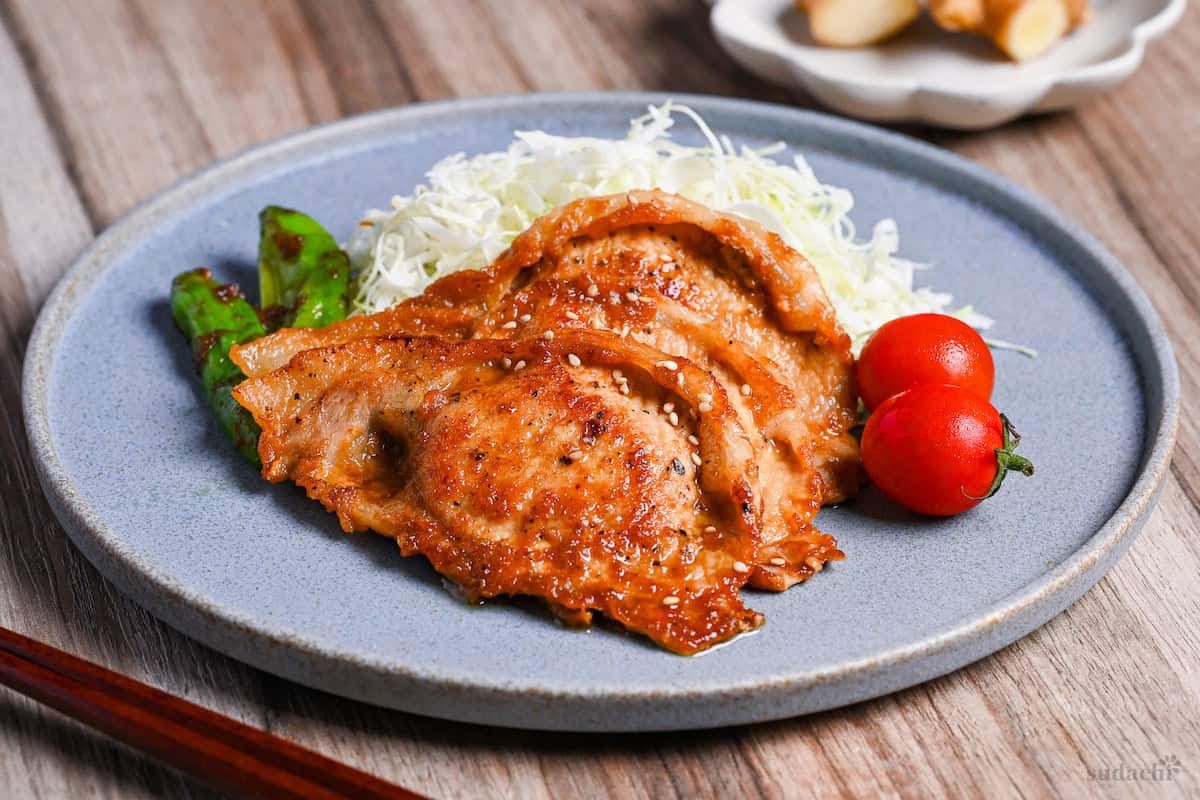
What is Pork Shogayaki?
Shogayaki (豚の生姜焼き) is one of the most beloved Japanese home-style pork dishes, right up there with classics like tonkatsu, tonjiru, kakuni, and subuta. It’s made by quickly cooking thin slices of pork in a savory-sweet sauce of soy sauce, mirin, and sugar, brightened with freshly grated ginger.
Traditionally, ginger wasn’t just for taste. It also helped balance pork’s richness and made the dish feel refreshing, especially in hot summers. Over time, shogayaki became a favorite for busy households, lunch boxes, and even restaurant menus across Japan.
Don’t worry if you’ve never made it before! My recipe skips the marinating step, so you get tender, flavorful pork without extra prep time.
Best Cuts of Pork for Shogayaki
Shogayaki is a quick-cook dish, so tenderness comes from the right cut + thin slicing + short, hot cooking. Fat adds flavor but can feel heavy if over-rendered, lean meat tastes clean but dries fast. Aim for 3-5 mm (⅛-3⁄16 in) slices and finish the sauce at the end so it glazes.
| Cut | Profile | Why choose it |
|---|---|---|
| Shoulder Loin (Rib Loin) | Balanced marbling, juicy | The classic shogayaki cut |
| Loin | Mostly lean, fat on edges | Light, clean flavor, but easy to get tough |
| Belly | Fatty layers, big umami | Ultra-juicy, saucy rice-on-top vibes |
| Shoulder | Leaner, stronger grain | Budget-friendly, deep pork flavor |
| Mixed offcuts | Mixed textures | Weeknight hero: fast, soaks sauce well |
My go-to baseline: Shoulder loin, 3-4 mm.
My subscribers’ recommendationsSome of my YouTube subscribers suggested that this recipe turns out great with Boston butt or pork neck as well!
Shogayaki doesn’t have to be limited to pork. While pork is traditional, other proteins can work. When you do, make sure to adjust cooking time accordingly.
- Chicken thighs: Lighter and less fatty, giving a fresher, cleaner flavor with ginger soy sauce.
- Beef slices: Richer and more robust; the ginger-soy flavor leans toward yakiniku or steak.
- Lamb: Possible, but since lamb has a stronger flavor, you’ll want to increase the ginger to balance it out.
Shogayaki Ingredients
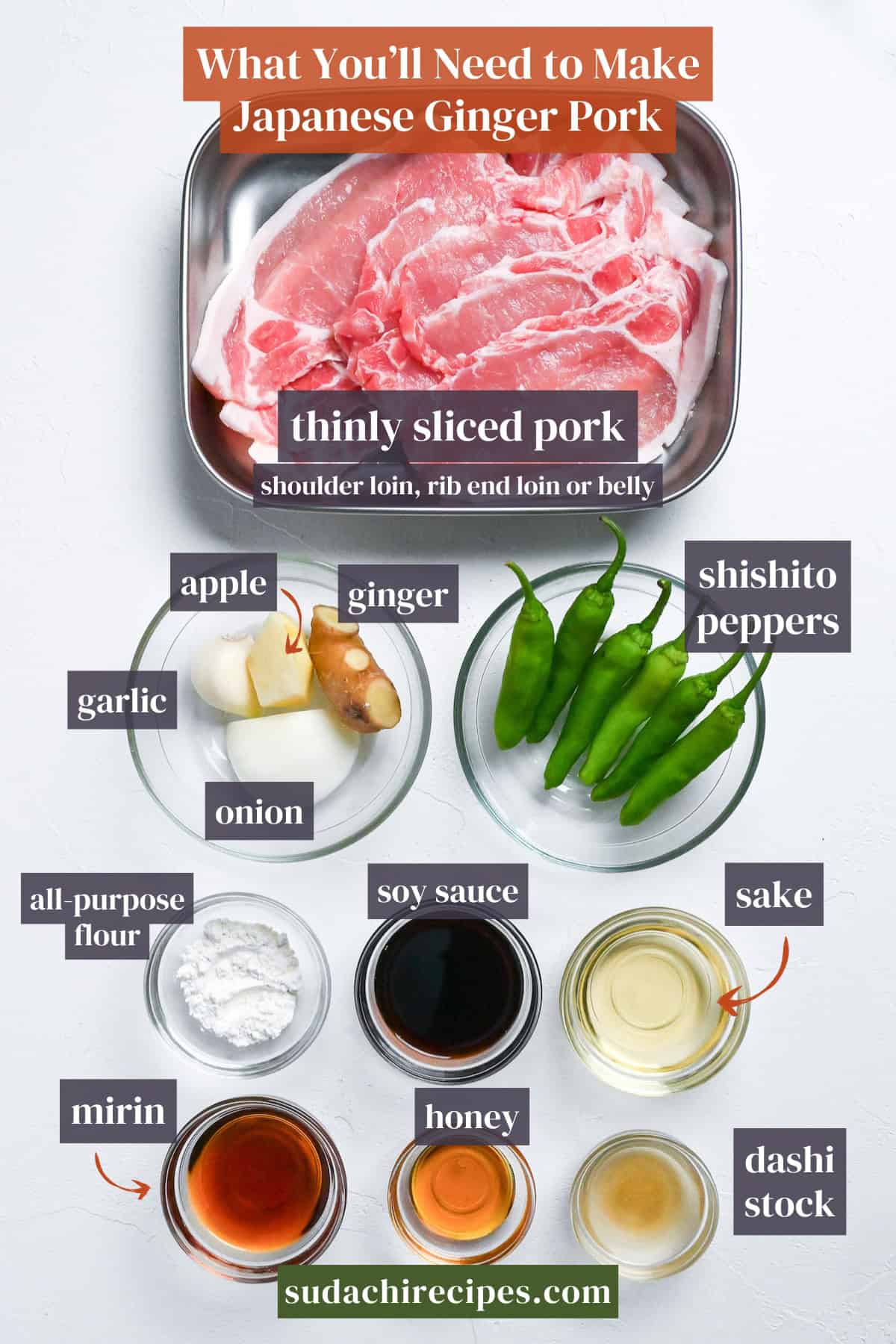
- Ginger root: Preferably fresh one. If you’re out, ginger paste in a tube (slightly higher amount) works. The kick is softer and less floral but still brings cozy warmth.
- Japanese soy sauce: Japanese all-purpose (koikuchi) soy sauce is the savory backbone here. While Chinese light soy works in a pinch, start with a touch less or add a pinch of sugar to round its sharper edge.
- Dashi stock: If you have leftover homemade dashi (or dashi from dashi packet), use that. Otherwise, just mix water with a pinch of instant dashi granules for this recipe.
Substitution Ideas
- Pork: Chicken thighs or thinly sliced beef.
- Sake alternatives: White wine or dry sherry are your best bets if you can’t find sake. Chinese rice wine (Shaoxing) is closer to sake’s taste, but use half the amount since it’s more intense.
- Mirin alternatives: Mix sugar with sake/dry sherry/white wine/water as a simple swap. For something more interesting, try orange, apple juice, or cola.
Have trouble finding Japanese ingredients? Check out my ultimate guide to Japanese ingredient substitutes!
How to Make My Buta no Shogayaki
If you prefer to watch the process in action, check out my YouTube video of this shogayaki recipe!
i. Grab your ginger, garlic, apple, and onion and grate them into a small bowl. A micro-plane (or even better, Japanese ginger grater) works best here.
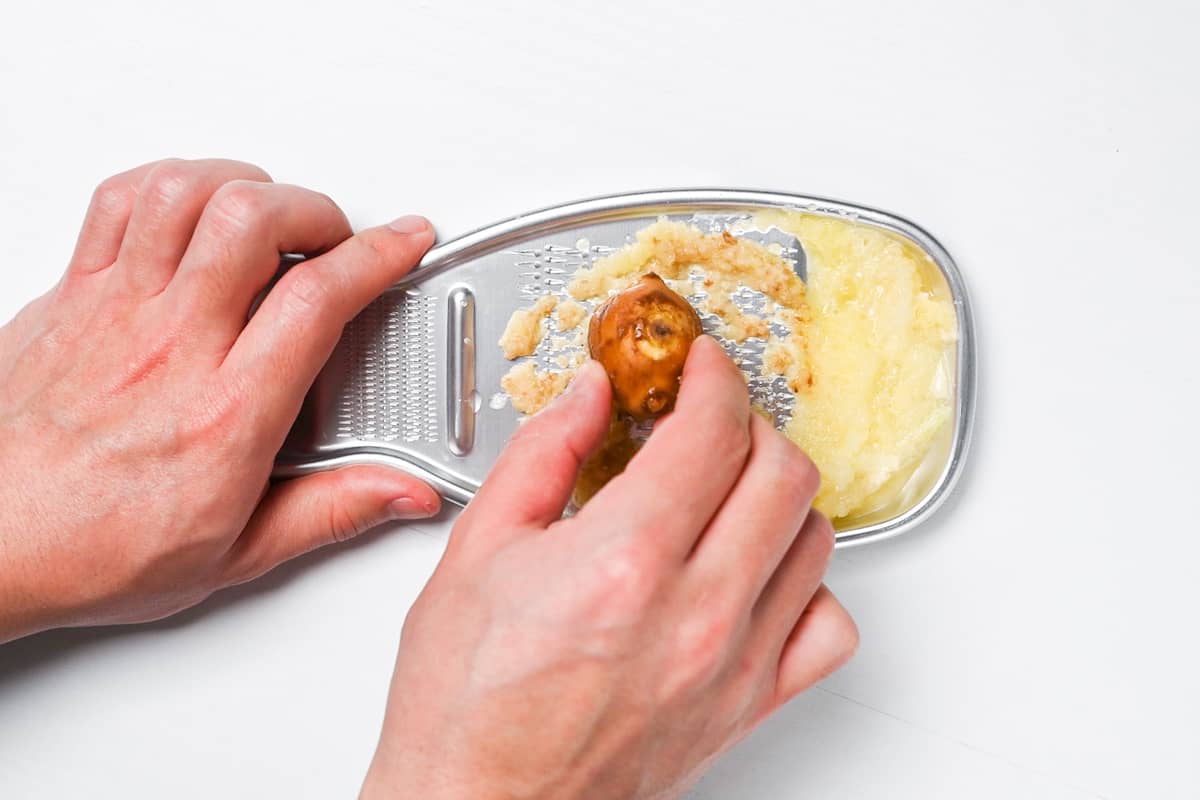
ii. In a small bowl, stir together soy sauce, sake, mirin, dashi, and honey until the honey dissolves.
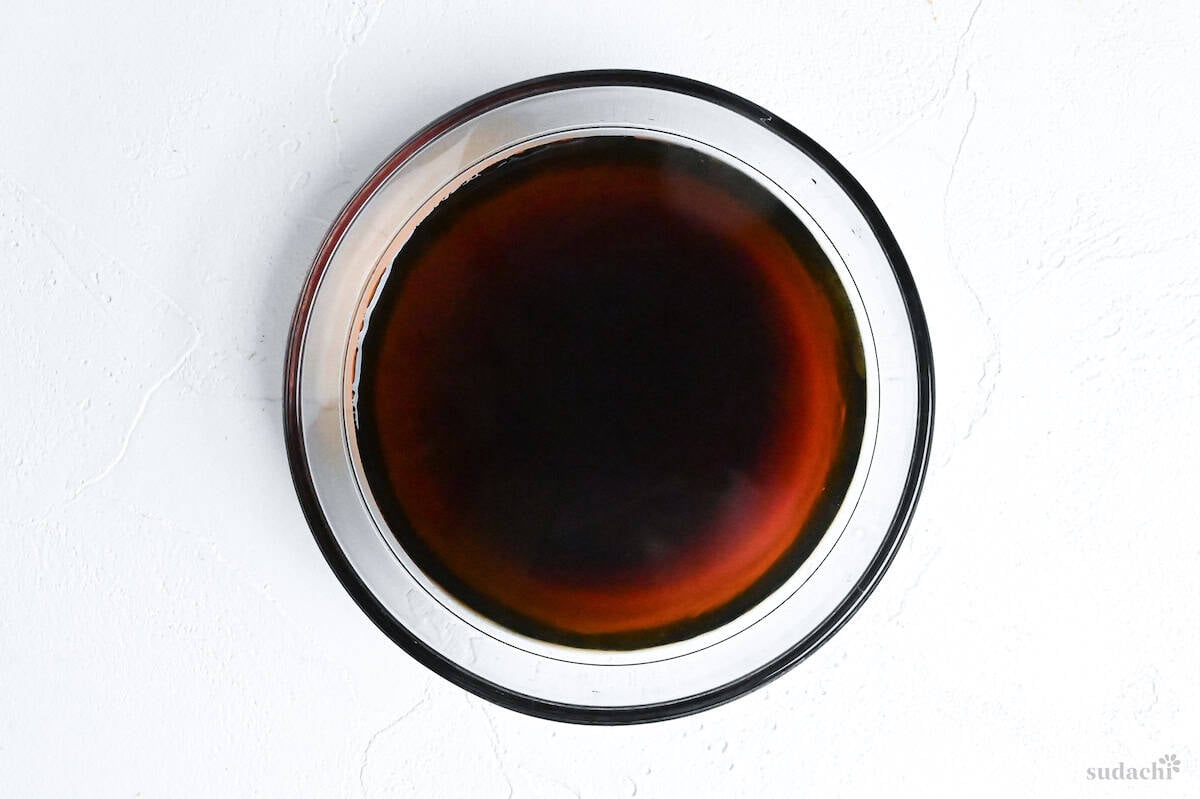
iii. Then combine with the grated pastes.
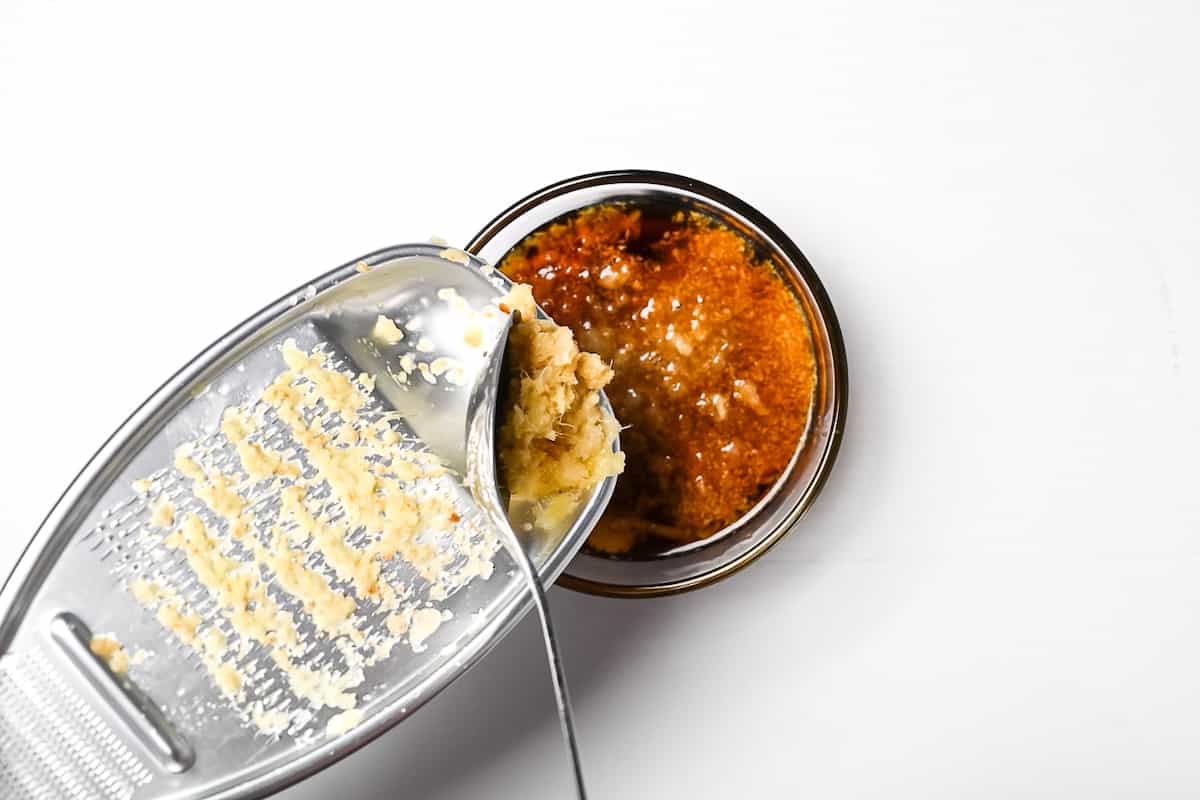
i. Pat pork slices dry. To keep slices flat, score the seam where fat meets lean with shallow cuts every 2-3 cm (about 1 in), just deep enough to nick the connective tissue without cutting through. If any slices are thicker, press them gently so they’re an even thickness for consistent cooking.
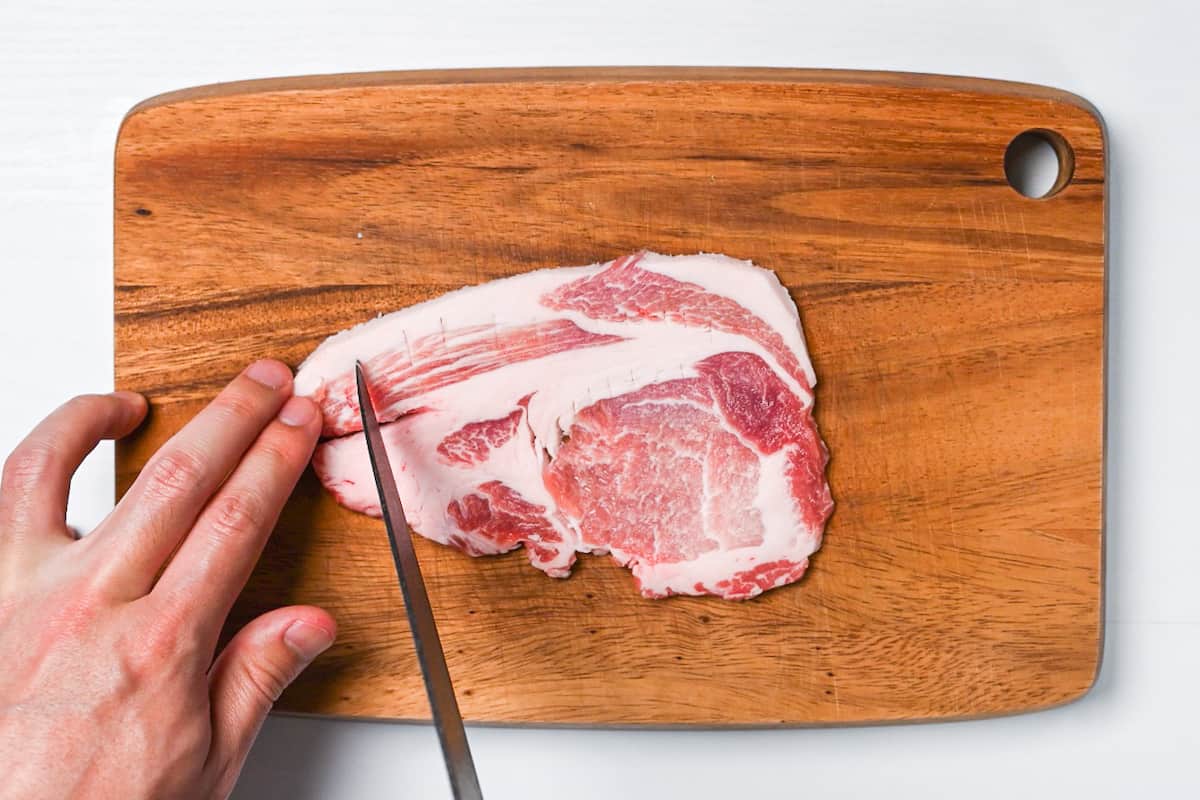
ii. Sprinkle a small pinch of salt and pepper on both sides of each slice. Dust very lightly with flour. Flour helps the glaze cling later and gives the sauce body without turning pasty. You can swap potato starch or cornstarch if needed.
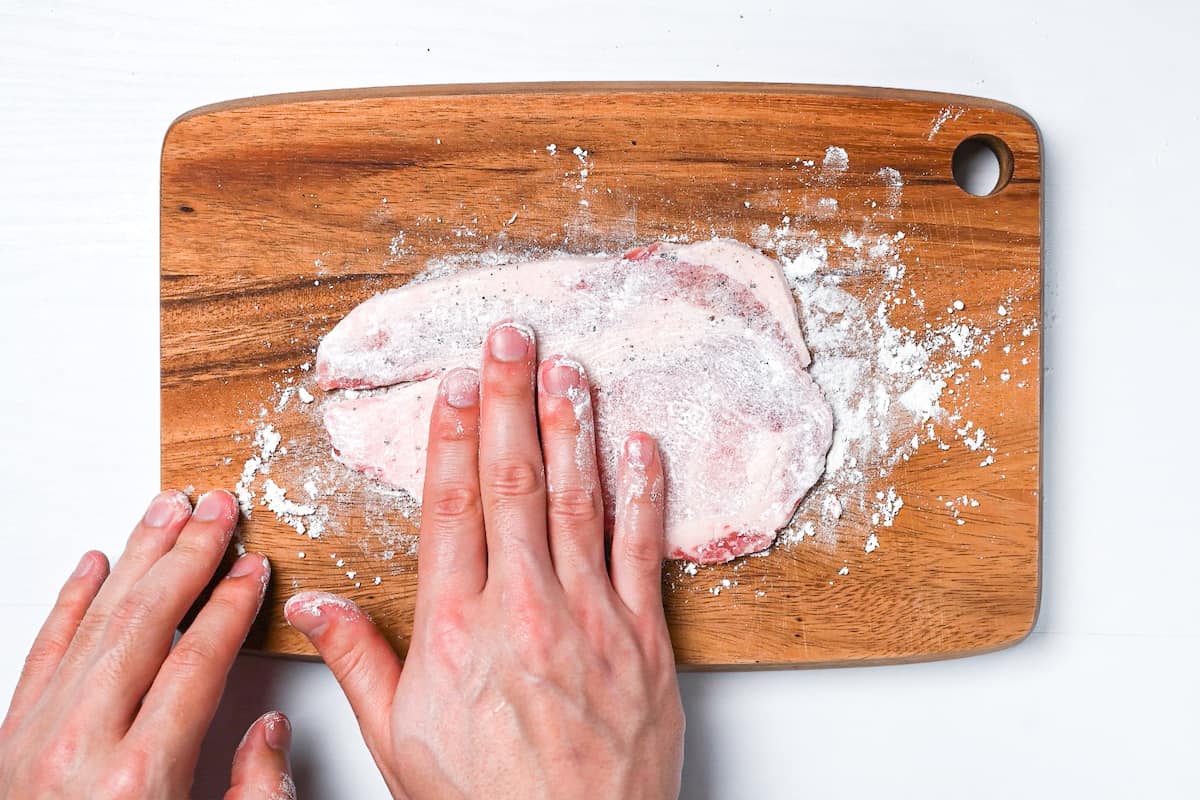
i. Set a large pan over medium-high heat and add neutral oil. Heat until the oil shimmers. Lay the pork in a single layer without overlap so every piece touches the hot surface.
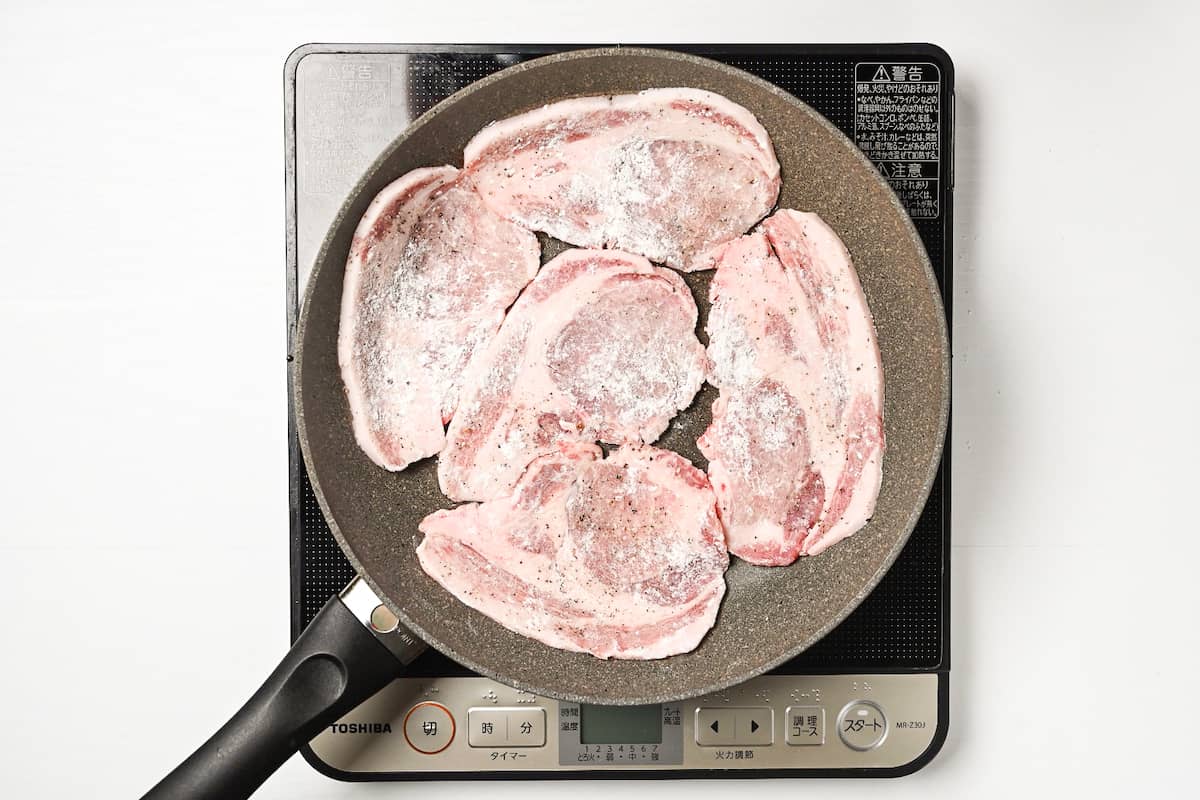
If your pan is small, cook in two rounds rather than crowding to avoid steaming.
ii. Let the pork cook undisturbed until the edges turn golden and the slice releases easily from the pan, about 1-2 minutes depending on thickness. Resist nudging, you’re building a flavorful crust that will help the glaze cling.
iii. Flip the slices. If you see pooling fat, briefly remove the pan from heat and blot or pour off most of it, leaving just a thin film. Return to medium heat, pour in the sauce, and swirl the pan so every piece is coated while the liquid begins to bubble.
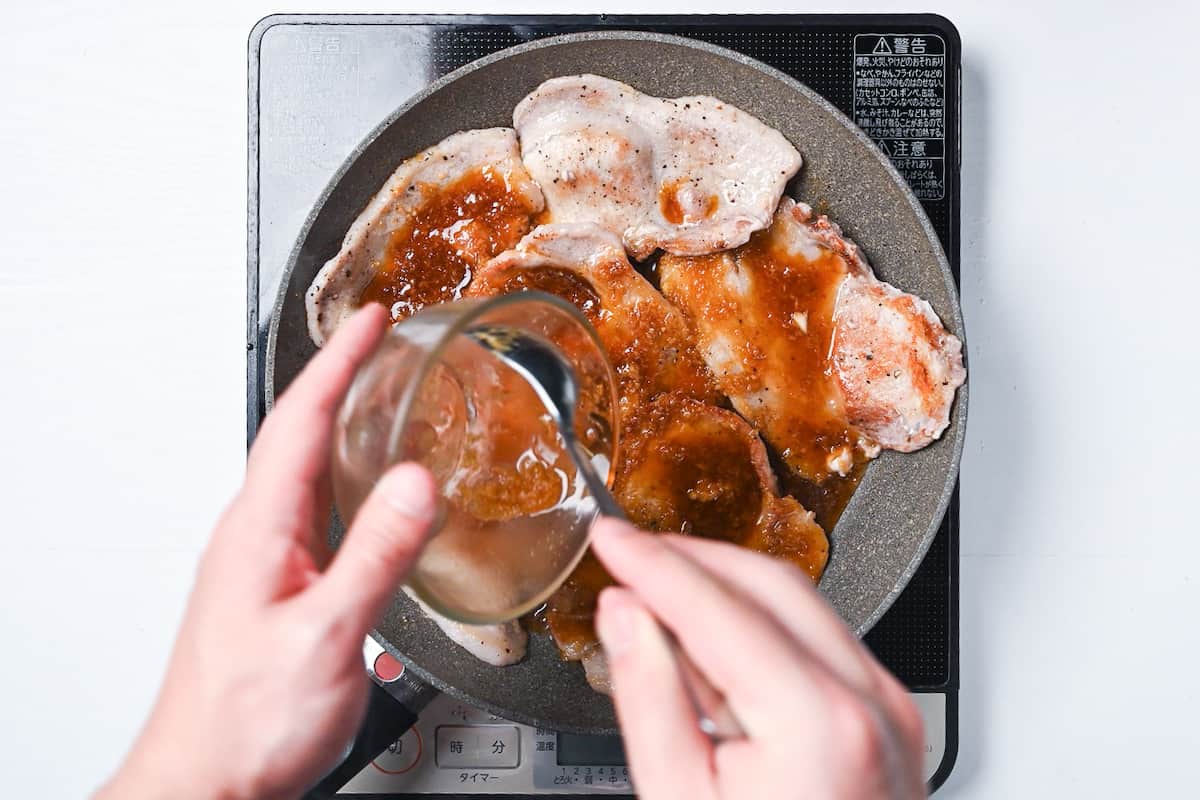
i. Simmer, tossing gently, until the bubbles look thick and glossy and the pork is lacquered and springy to the touch, 45-90 seconds.
If you want a bolder, fresher ginger hit, I highly recommend stirring in some newly grated ginger about 10 seconds before you turn off the heat.
ii. Then rest the meat off heat for 3 minutes so juices settle. For a bolder, fresh ginger hit, stir in a pinch of newly grated ginger 10 seconds before turning off the heat.
i. Slide the pork to a warm plate. Add 6 shishito peppers to the remaining glaze in the hot pan over medium-high. Cook, turning, until the sauce starts to caramelize and cling to the surface, about 2-3 minutes.
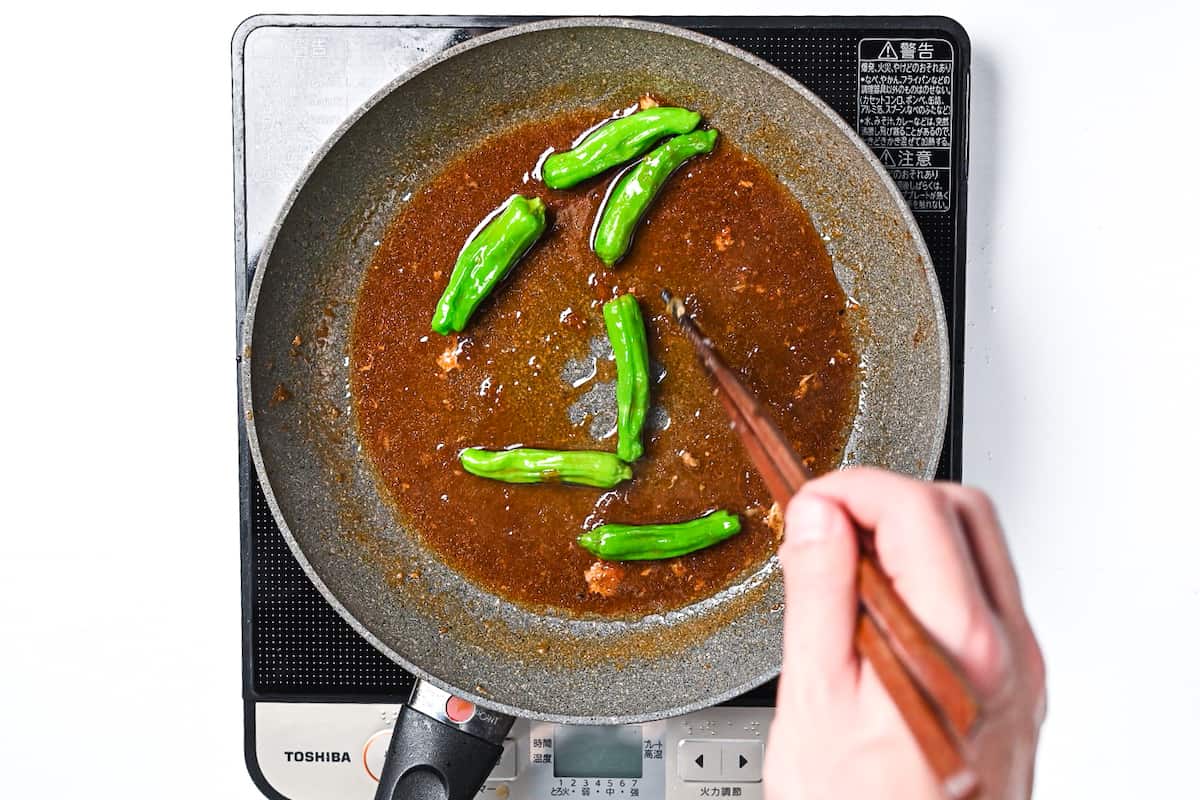
i. Arrange the pork and shishito on a plate and spoon over any remaining glaze. Crush a pinch of white sesame seeds between your fingers over the top and finish with a few drops of toasted sesame oil for aroma.
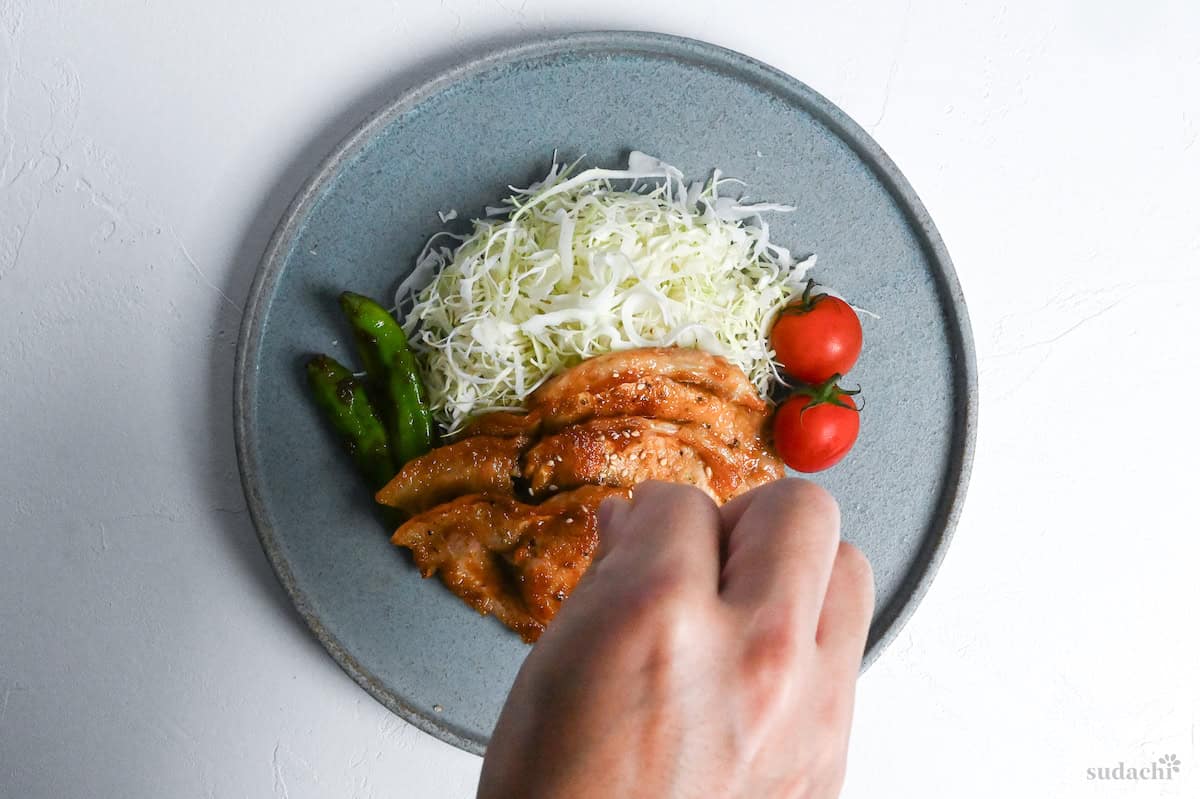
ii. If it tastes richer than you like, a few drops of lemon juice will brighten and balance without dulling the shine.
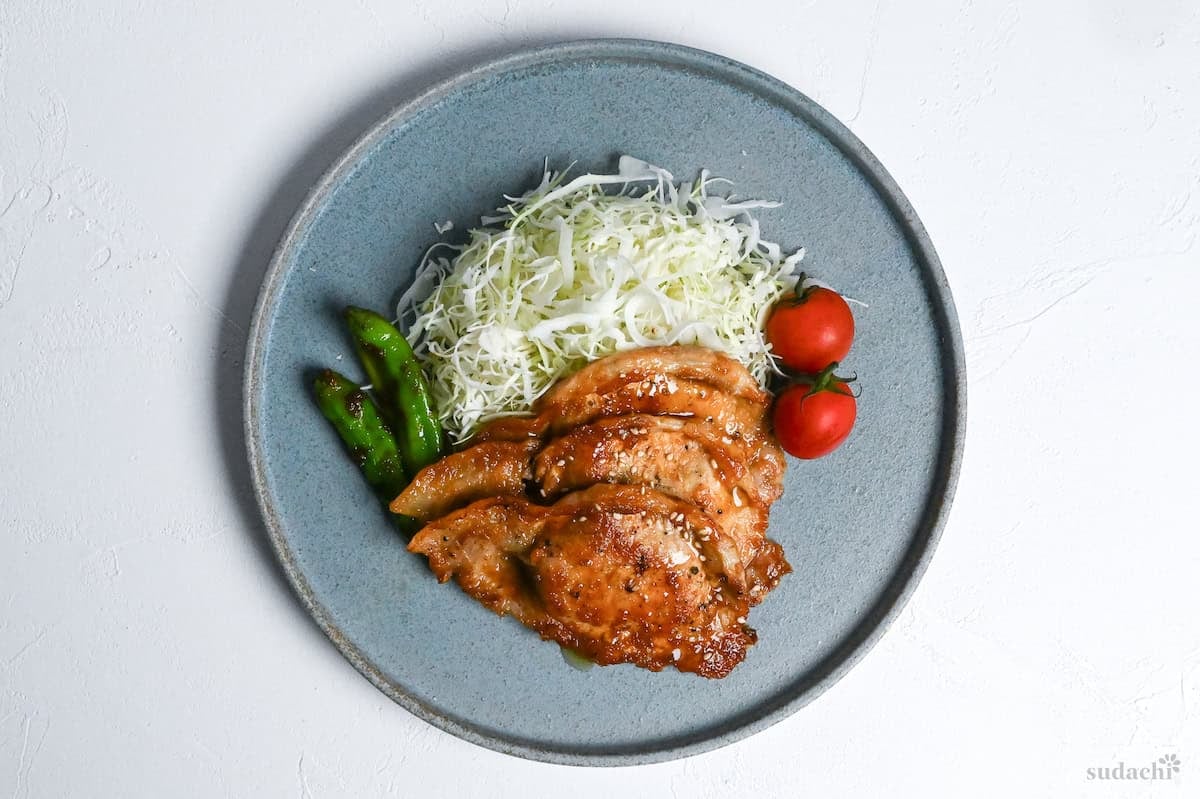
iii. This dish is rich, so make sure to enjoy this with a side salad and plain Japanese rice!
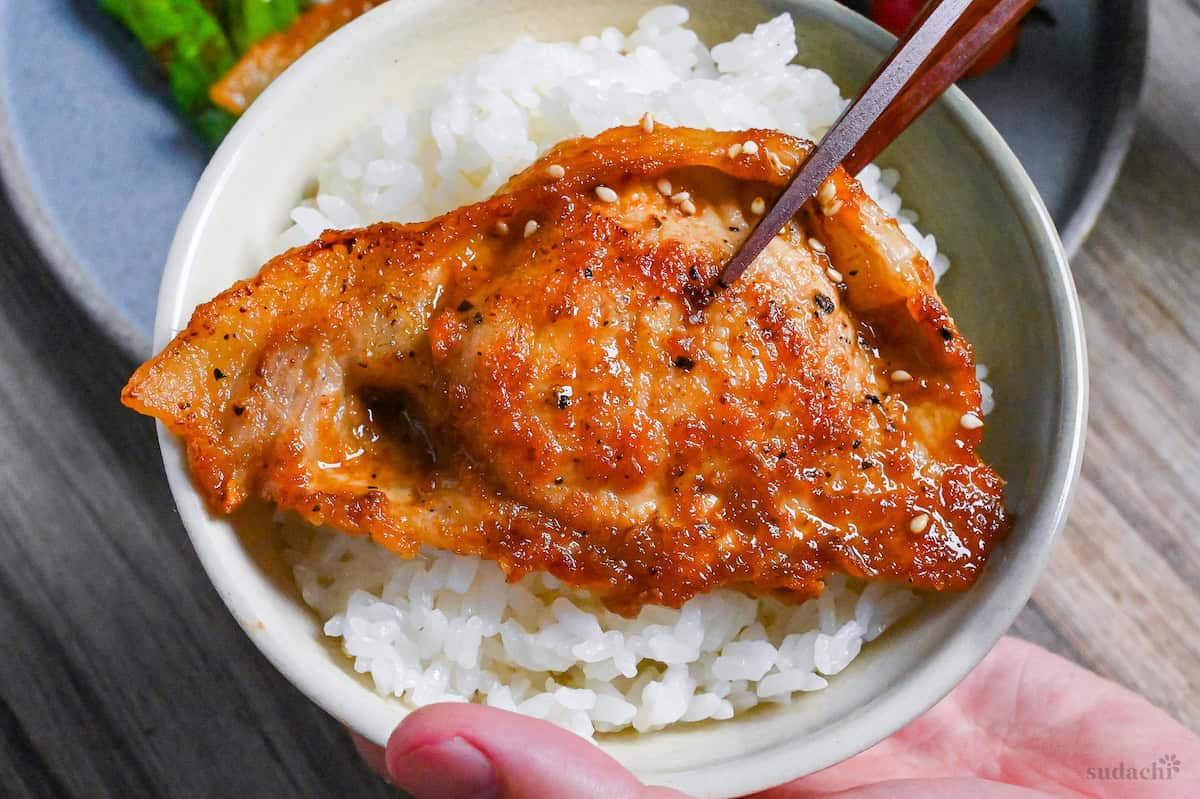

Essential Tips & Tricks
- Season lightly and dust with only a thin coating of flour.
- Once the pork hits the pan, resist moving it.
- Pour off or blot excess fat before adding the sauce.
- Reduce the sauce until it coats the meat in a shiny layer, and confirm pork is at 63℃ (145°F) with a 3-minute rest.
- For extra ginger kick, stir in a pinch of fresh grated ginger in the last 10 seconds of cooking.
With these simple tips in mind, you’re set for success every time you make Japanese ginger pork.
Storage & Meal Prep
Fridge: Airtight container with sauce, up to 2 days.
Freezer: Individual portions wrapped and sealed, up to 2-3 weeks for best quality. Cool completely before freezing.
Meal Prep: You can prepare extra servings on the weekend, freeze them in single portions with rice and vegetables, and use for weekday lunches.
Reheating: Add 1 tablespoon water to pan, cover, and steam-heat on low to prevent toughening. Refresh with a pinch of fresh grated ginger if the aroma has faded.
What to Serve With This Recipe
Shogayaki Q&A
Overcooking or choosing very lean cuts (like pork leg) causes dryness. Keep cooking time short, score thicker cuts, and dust lightly with flour to retain moisture.
This happens when the fat-lean seam contracts. Score the connective tissue every 2-3 cm before cooking.
Ginger aroma compounds evaporate with heat. For a punchier finish, stir in a small amount of freshly grated ginger 10 seconds before turning off the heat. If the flavor is too sharp, balance with a pinch more sugar and longer cooking.
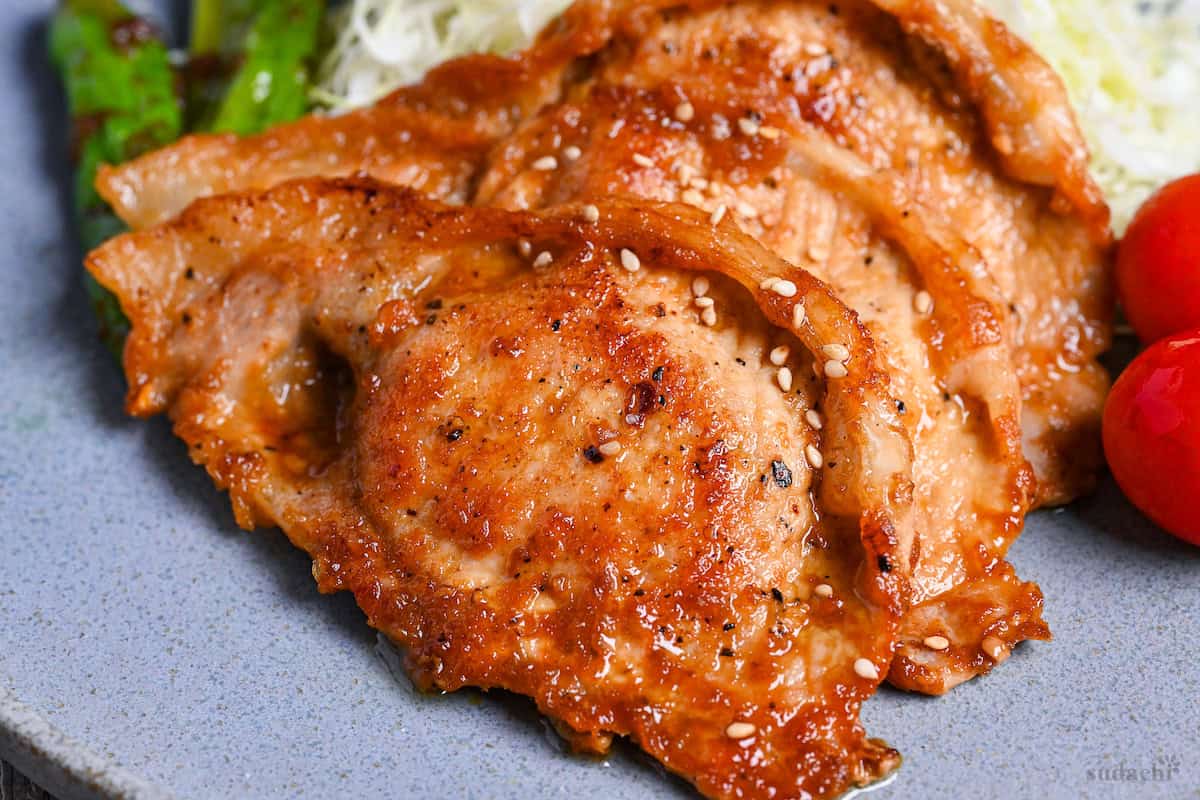
More Weeknight Japanese Recipes
Ready to expand your culinary horizons? Browse through these quick and easy Japanese recipes perfect for busy home cooks.
Did You Try This Recipe?
I would love to hear your thoughts!
💬 Leave a review and ⭐️ rating in the comments below. 📷 I also love to see your photos – submit them here!

Buta no Shogayaki (Japanese Ginger Pork)
Ingredients
Sauce
- 20 g ginger root skin on, approx. 1 tbsp for 20g
- 1 tsp apple or apple juice, or smooth apple sauce
- 1 tsp onion
- 1 clove garlic
- 2 tbsp Japanese soy sauce (koikuchi shoyu)
- 3 tbsp sake
- 2 tbsp mirin
- 1 tbsp dashi stock use leftover homemade dashi stock, or dissolve a pinch of instant dashi granules in 1 tbsp of water
- 1 tsp honey or maple syrup
Shogayaki
- 250 g pork loin 3-4mm thick, marbled shoulder-loin; thin pork belly also works
- salt and pepper for seasoning
- all-purpose flour for dusting, or potato/corn starch for GF
- 1 tbsp cooking oil
- 6 shishito peppers or mini sweet peppers/sliced bell peppers
- toasted white sesame seeds
- toasted sesame oil
My recommended brands of ingredients and seasonings can be found in my Japanese pantry guide.
Can’t find certain Japanese ingredients? See my substitution guide here.
Instructions
- Finely grate 20 g ginger root, 1 tsp apple, 1 tsp onion and 1 clove garlic.

- Add 2 tbsp Japanese soy sauce (koikuchi shoyu), 3 tbsp sake, 2 tbsp mirin, 1 tbsp dashi stock and 1 tsp honey to a small bowl, then add the grated ingredients and mix well. Set by the stove for later.

- Take 250 g pork loin and make small incisions in the fat to prevent curling.

- Sprinkle each slice of pork with a pinch of salt and pepper on both sides and then lightly dust with all-purpose flour.

- Heat a large pan on medium-high add 1 tbsp cooking oil. Swirl the pan to evenly distribute the oil, then once hot add the pork slices in a single layer without overlapping. (Cook in batches if your pan is small).

- Once golden on one side, flip the pork slices over. If a lot of fat has rendered out, use kitchen paper to blot the excess. Add the sauce from earlier and move the pork around the pan to distribute the sauce evenly. If you want a bolder ginger hit, stir in ½ tbsp of newly grated ginger just before you turn off the heat.

- Once pork is cooked through, transfer to a warm plate. While it rests, place 6 shishito peppers in the same pan with the leftover sauce for 2-3 minutes or the sauce starts to caramelize and cling to the surface.

- Turn off the heat and arrange the pork and peppers on serving plate. Drizzle any leftover sauce over the pork. Sprinkle a pinch of toasted white sesame seeds and drizzle a touch of toasted sesame oil over the pork. Serve with rice and salad, and enjoy!

Video





Cooked this tonight. Reminded me of Japanese meals in better times!
Thanks for sharing.
Hi, Andy
You’re welcome and thank you very much for the lovely comment!
Every time someone talks about Japanese food they mention sushi and ramen but this and gyoza are what make me homesick. Great recipe.
Hi Christopher,
I agree, sushi and ramen are great, but I always think of them of restaurant dishes. Gyoza and shogayaki are so comforting and typical dishes to enjoy at home aren’t they? Thank you so much, and thank you for the 5 star rating 🙂
Thank you for sharing
You’re welcome! Thank you for your generous rating 🙂
This good Recipe help me know about Japanese cosine
so thank for you and your work
Thank you!
Your recipe is on another level, Yuto! One of the best things I’ve ever eaten my life! No joke! My only minor suggestion is that 20g of grated ginger is about 1 tbsp (at least by my testing), and I feel that giving this approximation in tbsp could save some people some time, especially those who don’t have a kitchen scale, since the other grated ingredients are given in tsp and tbsp. Shishito peppers aren’t in season here currently, so I couldn’t find any, but sweet peppers worked amazingly! Thanks for the suggestion!
Hi Lion,
I’m so happy you enjoyed it! Thank you so much for the thoughtful comment and for sharing your photo! It looks fantastic! I really appreciate your note about the 20g of ginger, that’s very helpful for others! I’ll make sure to add that to the recipe note. 🙂
Yuto
10/21/25
First time making this recipe and amazed how all the flavors came together-.
Simple ingredients and so delish!
Went above with making a Japanese potato salad… 10/10!
I loved the grilled shishito peppers with the glaze..
Thank you for sharing!
* I’ll be visiting Japan in December for three weeks and I have a feeling I will be influenced to cook some new recipes..
Hi Amy,
Thank you so much for trying this recipe and sharing your picture! That sounds amazing! Love that you paired it with Japanese potato salad! Wishing you an unforgettable time exploring Japan and our food culture! 🙂
Yuto
Made this the other night, my family loved it and my husband has already asked me to make it again
Hi Patti,
That makes me so happy to hear! I’m really glad your family enjoyed this shogayaki! Always makes my day when there’s a request for seconds. 🙂
Yuto